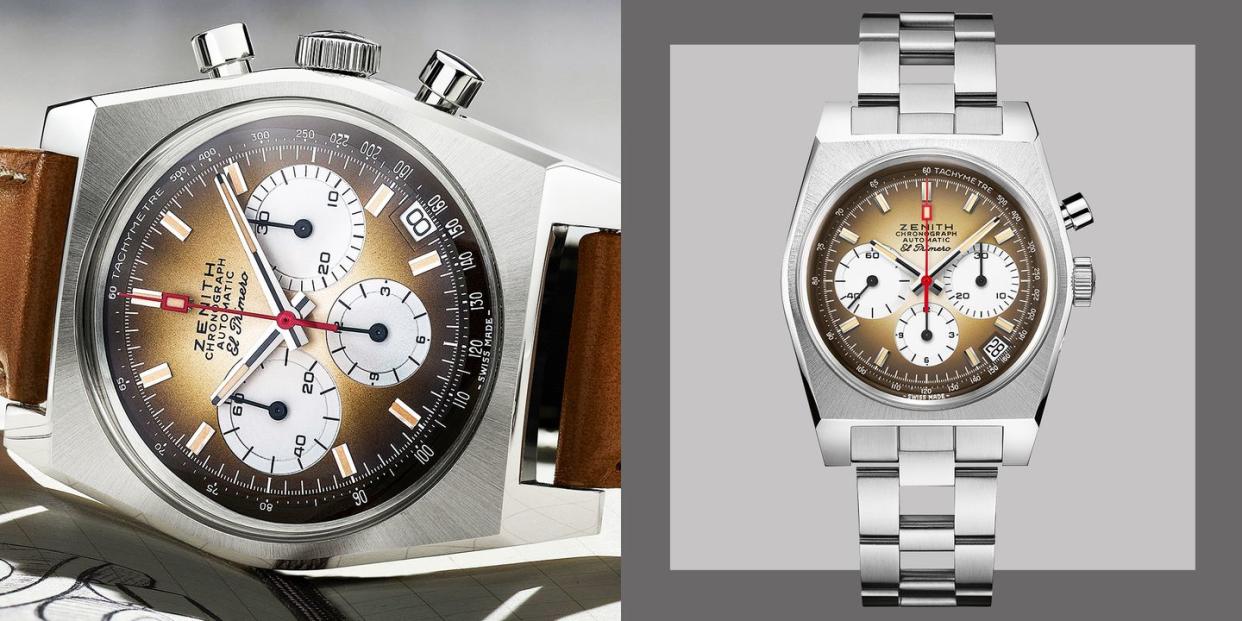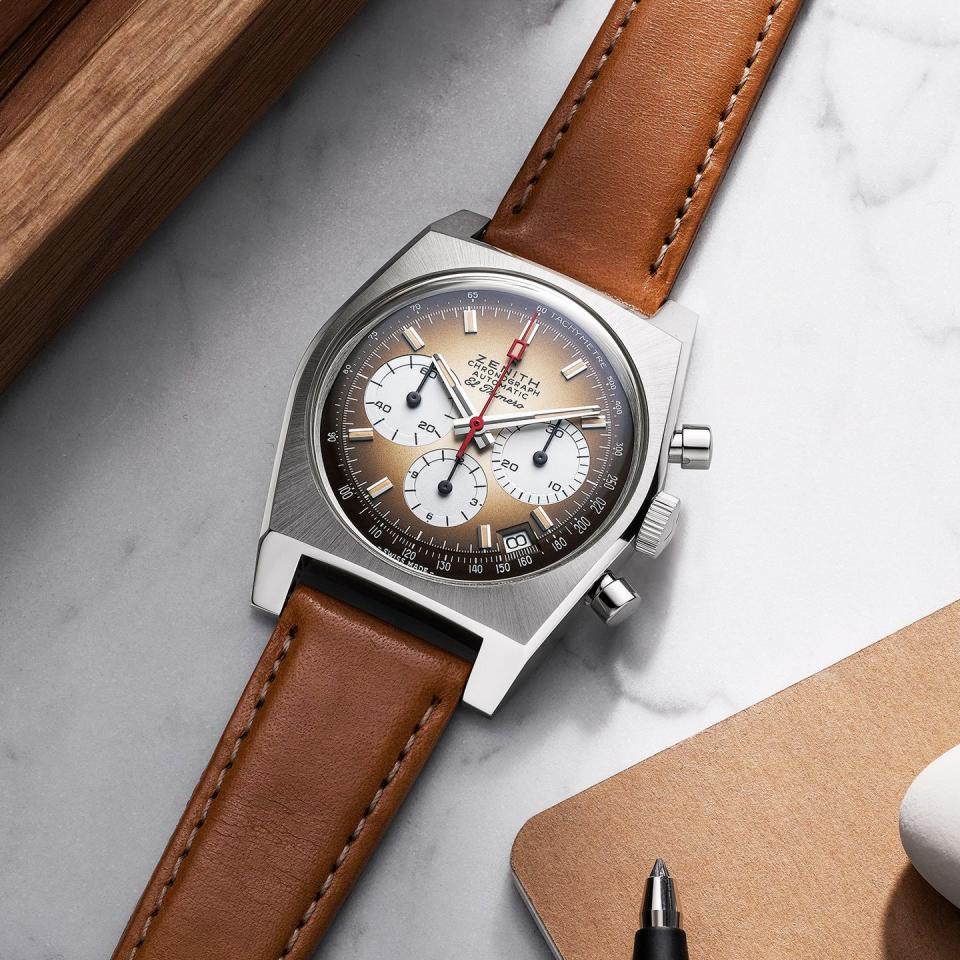Zenith's A385 Chronomaster Revival Is a Stunning Piece of Watchmaking History

Welcome to Dialed In, Esquire's weekly column bringing you horological happenings and the most essential news from the watch world since March 2020.
The recreation of vintage-inspired watches from an illustrious back catalog of designs has become an accepted, if sometimes overused, industry practice for watch brands—namely those with the right history—to create “newness.” Or maybe that should be “oldness.” Whatever. While we are all easily smitten by riffs on iconic watches, precise recreations down to the nth degree are often stymied by the need to modernize in the process, like using a more modern in-house movement or supersizing a watch to suit modern tastes for bigness. But what happens when the movement is the most famous thing about a watch?
Since 2019, Zenith has made much of the 50th anniversary of its groundbreaking El Primero movement and has produced a number of nuts-and-bolts rebuilds, redesigns, or updates of the iconic watches that first carried it. But arguably none of them are as mind-bendingly faithful to the original inspiration than the Chronomaster Revival A385, out now.

The El Primero was a groundbreaking movement for watch nerds when it first surfaced in early 1969 for a number of reasons, not least being the 36,000 semi-oscillations per hour that made it significantly more accurate than most production watches of the time. More crucially, however, it was also the first automatic chronograph, the victor in a triangular horological equivalent of the space race. At least it was the first one let out of the bag, hence the name. In the other two corners, Seiko in Japan and an alliance between Heuer-Leonidas (as Tag Heuer was then called), Breitling, and Hamilton; both were pipped to the post by a Zenith press conference in Geneva in January 1969. The original A385 was one of three rather different-looking designs to first carry the El Primero, but its blocky tonneau shape and smoked brown dial was probably the most “1969” of them all.
To test the A385’s—or rather the El Primero’s—reliability, in 1970, Zenith strapped one to the undercarriage of an Air France Boeing 707 bound for New York in what was imaginatively called “Operation Sky.” Though it looked like a marketing gimmick, the test was a bona fide trial for the new watch, designed to pit it against the extremes of changes in temperature and air pressure as well as wind, water, and vibrations at high altitude. On landing in New York, the watch showed no change in performance. The El Primero went on to power not only Zenith watches, but pieces made by other brands like Tag Heuer, Dunhill, and for a time even Rolex, which used it in the Daytona for just over a decade from 1989 (albeit with some significant in-house modifications).
The modern A385 was built using the original Zenith blueprints to an exacting degree of authenticity—all the way down to the relatively diminutive 37mm cushion case—with the only differences being a domed sapphire crystal instead of the original acrylic glass and an exhibition case back to show the better to off the El Primero movement. But if anything screams its age here, it’s the brown gradient dial, another Zenith first in 1969 and a stage-setter for the 1970s that was well ahead of its time.
You Might Also Like

